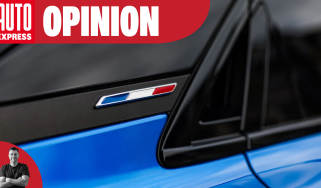Mitsubishi Evo
Entry-level performance cars often leave drivers feeling a bit short-changed. While they may be fun, their budget price can mean there's a significant drop in performance, leaving you wishing you'd paid a bit extra for the full-fat model.
The 260 is far better value for money and thoroughly rewarding to drive. As an addition to the Evo VIII line-up, it's more than welcome. But don't be fooled by the 'low' purchase price - the Evo's thirst for fuel and high insurance rating mean it will still be an expensive proposition for everyday motoring.
Entry-level performance cars often leave drivers feeling a bit short-changed. While they may be fun, their budget price can mean there's a significant drop in performance, leaving you wishing you'd paid a bit extra for the full-fat model.
On paper, at least, the new Mitsubishi Lancer Evo VIII 260 seems as though it should be a car that, while rewarding, doesn't have the ability of its higher-priced brother. After all, it develops 38bhp less than the 301bhp FQ-300 model, has a five-speed gear-box instead of the more powerful car's six-speeder, and also sports a smaller, subtler rear spoiler.
But because it costs £6,000 less than the FQ, the 260 is too tempting to ignore - and it has plenty to offer. Despite the power deficit, the car is still startlingly quick to drive. Turbo lag is more noticeable from a standing start but, on the move, the 263bhp engine feels just as lively as that of its larger brother, while the five-speed transmission has a tight, positive shift and is rewarding to use.
Yet the lack of a sixth ratio means it feels unrefined at cruising speeds, while as with the FQ-300, you have to drive the Evo very gently to keep fuel economy above the 20mpg barrier. Being gentle isn't the 260's strong point, though. Under the skin, the car has virtually the same hardware as the FQ-300. Even though the suspension has been modified slightly to give a more supple ride, this is hardly noticeable as uneven surfaces still cause spine-jarring bumps. Otherwise, the newcomer gets the same thrilling package as its more potent brother, including Mitsubishi's acclaimed active yaw control and active centre differential.
On dry tarmac, the VIII has such immense levels of grip that it's physically impossible to provoke understeer, while booting the throttle mid-corner results in only the slightest amount of movement from the rear end.
When driven on loose surfaces, how-ever, the Evo's prowess as a rally car becomes more evident. The active diff means the car can be set up to drift smoothly through flowing bends, while the steering remains accurate and perfectly weighted at all times.
Of course, any Evo is about performance, and for some buyers, the more power it delivers, the better. But in our opinion, the FQ-300's only advantage over the 260 would be in a game of Top Trumps. The 263bhp model might be marginally slower from a standing start and slightly less refined at cruising speed, but the £6,000 saving more than makes up for this.
In short, the 260 is as complete a driver's machine as the FQ-300, but is much more affordable. If anything, it's also better suited to British roads, as you can enjoy the performance without the greater risk of exceeding the speed limit as in the FQ-300.



